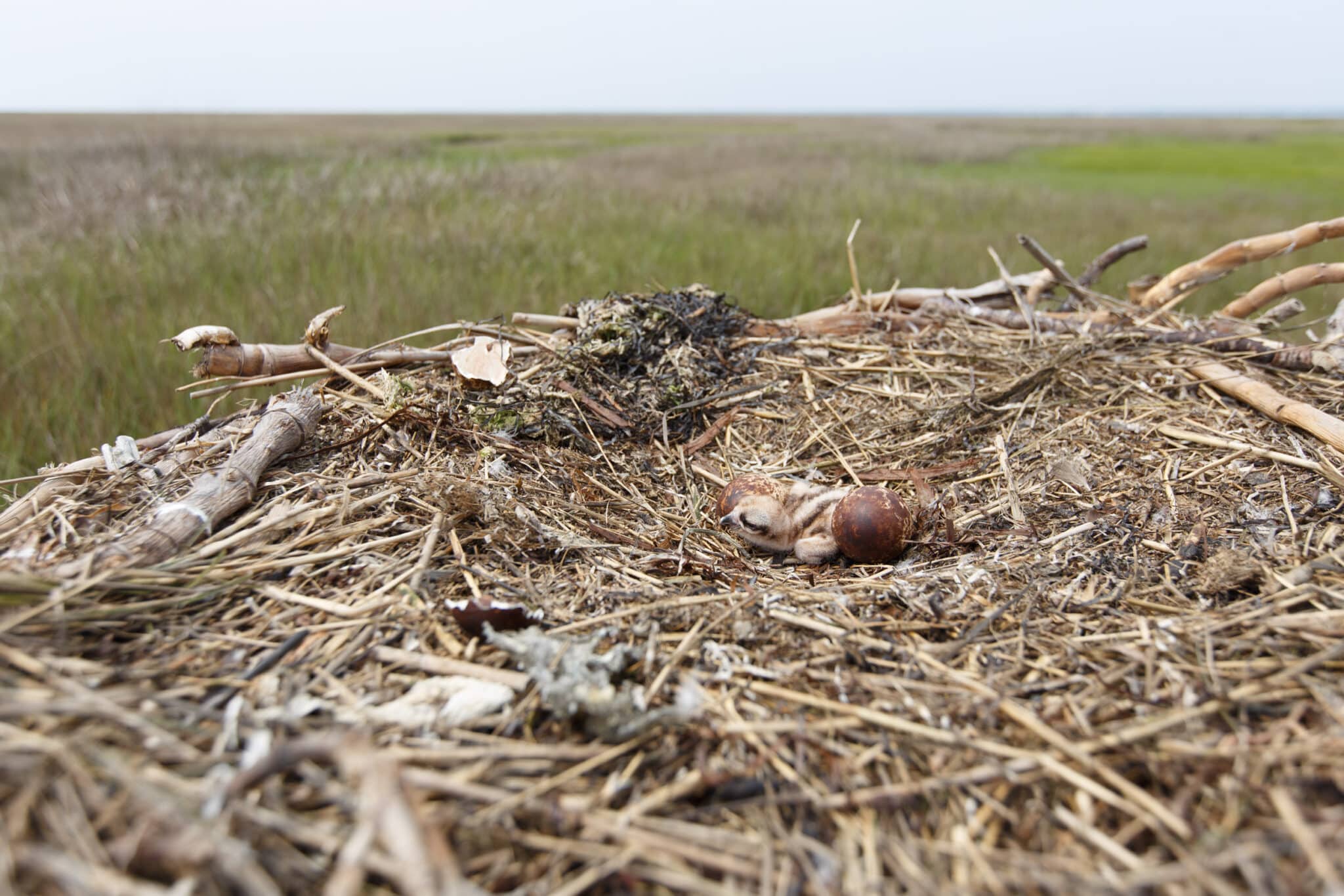Photo from the Field: Grim Outlook for Ospreys This Summer

This year is shaping up to be a terrible one for ospreys in New Jersey. Early season surveys, which we began to conduct more of in recent years, after nor’easters and shortages of prey caused nesting pairs fail to produce young. These early surveys provide valuable data on the outcomes of nests and insight on nest failures.
This spring and early summer, we have observed a high number of nest failures in an area around Long Beach Island on Barnegat Bay. This has also been observed directly through live streaming osprey cams from Cape May to Oceanville and reported by some of our dedicated volunteers in other areas. Right now all signs point to lack of food, which either caused adults to abandon incubation or starvation of their young.
A crucial prey item for ospreys is Atlantic menhaden, a forage fish that is found in the ocean and estuaries. They are found all along the Atlantic coast and are widely considered to be the most important fish in the sea. Not only are they filter feeders but they are food for a very wide variety of wildlife, from humpback whales and dolphins to ospreys, loons, tuna and striped bass, etc. They are also a very valuable fish that is used as whole bait, meal (solids, mainly for use in aquaculture as food for farm raised fish) and oils. In 2016, over 323 million pounds of menhaden was landed in Virginia alone. In coastal Virginia, osprey populations have collapsed and the likely culprit is lack of prey.
This spring adult menhaden were not very plentiful, especially after a nor’easter impacted the coast in late May. Observations of ospreys showed some were still catching menhaden but much smaller fish. Since then it has been a cascading effect of adult male ospreys not being able to find enough food to feed their mates and their young. When they can’t find food, they spend more time and energy searching and hunting and less time at their nests, leaving their mates to do more incubation and often times starving. This is when incubating females have to leave their nests and then their eggs or young are exposed to predators or harsh environmental conditions like extreme heat, which results in nest failure. There are still plenty of fish available to ospreys but fewer adult menhaden, which ospreys are more dependent upon, especially during this time of year when they are foraging more frequently to provide for their families. As a bioindicator species, ospreys showing us the shortage of menhaden in real time through the lens of their failed reproduction.
We hope learn the full extent of food stress on ospreys this year during upcoming nest surveys. For those who watch a nest or have a pair that nest near your home, you are encouraged to report osprey nesting activity online, via Osprey Watch. Since ospreys were recently upgraded to stable as their conservation status, we are concerned about their long term stability in a rapidly changing world. Your support to help us monitor ospreys during this time is crucial, as we do not receive any state or federal funding to carry out this important fieldwork.
Discover more from Conserve Wildlife Foundation of NJ
Subscribe to get the latest posts sent to your email.